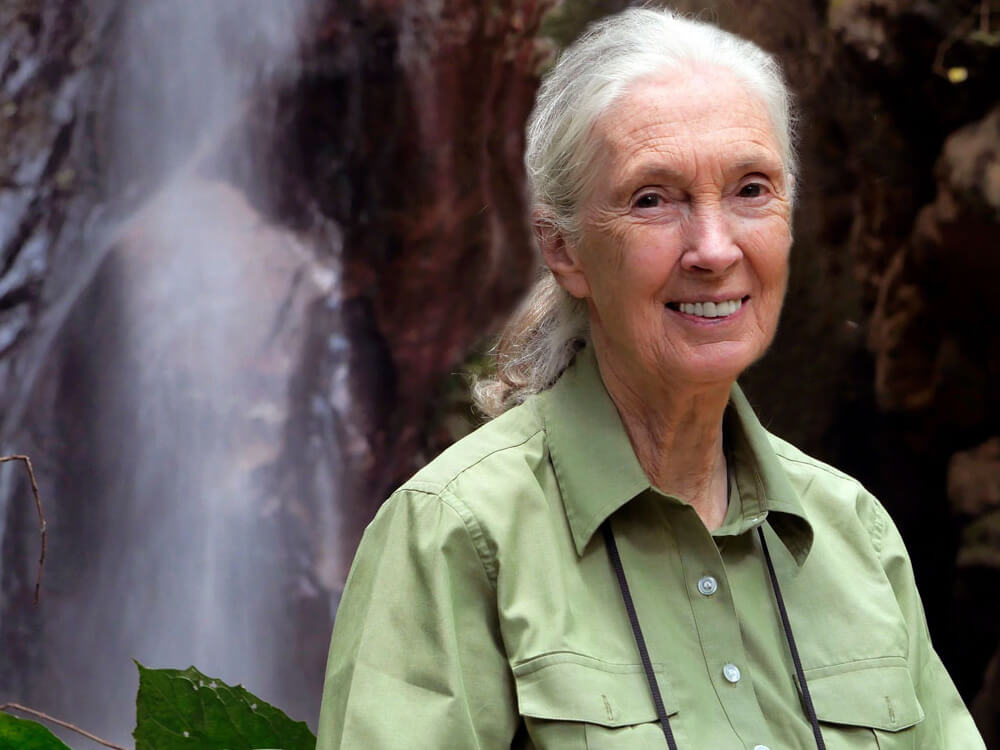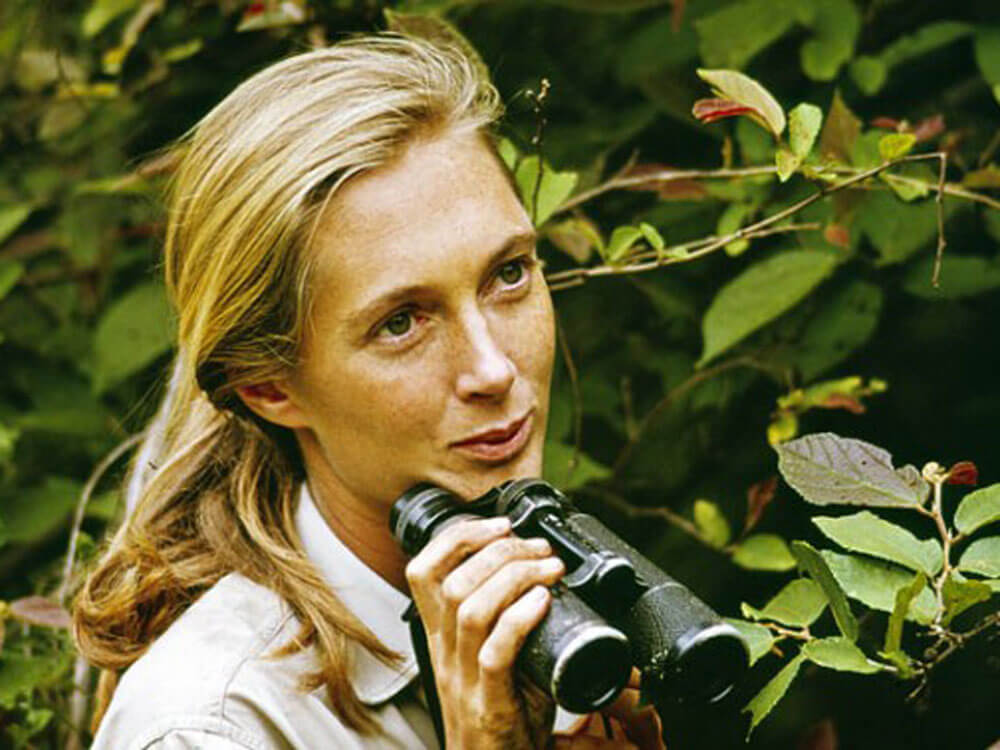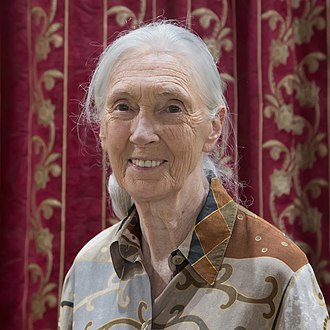According to Jane Goodall, the greatest danger to the future of mankind is apathy, and yes, it is true! Today, human beings are causing unimaginable destruction to other species because of their lack of empathy towards them.
As a primatologist and animal rights activist, she is still working with the same zeal to make sure they are treated in a better way!
Early Childhood
Jane Goodall was born on April 3, 1934, in a wealthy family in London.
While her father was an engineer and later on became a successful racing car driver, her mother was an author who used to write under the name Vanne Morris-Goodall.
When she was only one year old, her family moved out of London and shifted to a small riverside town Weybridge. She was looked after by a nanny during her childhood.
Her family moved to France when she was five and then again to Folkestone, a port town in England when World War II began.
Eventually, they moved into her grandmother’s home in Bournemouth, England.
So, Jane Goodall gets an opportunity to visit many places during her early childhood days. She had several pet animals including, a hamster, a lizard, a canary, some racing snails, caterpillars, and guinea pigs at her home!
No wonder, since she was a child, she was in abundance of love for animals.
Education
Jane Goodall received her elementary education in a school in Bournemouth and developed a habit of reading books.
The Jungle Book and Tarzan were her favorite books in which the central character was able to communicate with animals.
Reading all these books encourages her to dream that one day she too will be able to communicate with them and will travel to Africa!
Jane Goodall was 11 years old when she was enrolled in the Uplands School for girls in Bournemouth and formed a nature club with her sister Hudy and two friends.
However, soon she started to become uncomfortable with the regimented life of her school.
Gradually, Jane developed an interest in English and biology towards the end of her school days. She next joined the London’es Queen Secretarial College at the age of 19.
After graduation, she started a clerical job. However, this was not the end of her education.
She joined Cambridge University for doing a Ph.D. in ethology in 1961 and earned her doctorate degree for her thesis-‘Behavior of the Free-Ranging Chimpanzee’ in 1966.
Work

After graduation, Jane Goodall started to search job, and then after getting an invitation from her schoolmate to her farm in Kenya, she decided to go ahead in 1957.
Soon, she met Dr. Louis Leakey. He was a famous anthropologist and paleontologist. At that time, he was looking for someone who can gain an insight into the past of humans and can study chimpanzees from a fresh perspective.
He was impressed with the consistent efforts of Jane to understand the behavior of the little-known primates.
However, she had to return back to London in 1958 for a brief period to spend some time in the field of primate behavior. She again returned back to Africa in1960 and entered into the habitat of Chimpanzees in the forest of Gombe in Tanzania.
This was a turning point in her life as then there was no looking back. She conducted field studies on the distinct personalities and behavior traits of chimpanzees for the longest period and documented all her observations.
She got rare insights that completely transforms the earlier perception of human beings about chimpanzees. Then upon the suggestion of Louis Leaky, she joined Cambridge University.
Soon fame followed, and she gets sponsorship for her work from the National Geographic Channel, and she published her first article – My Life Among Wild Chimpanzees in 1963.
Then came the documentary series, and she became a well-known personality for her brilliant work in Africa.
In 1968, the Gombe reserve was declared a national park, and she continued her research work for the next 25 years!
In 1973, she was appointed as a visiting professor of Zoology at a prominent university in Tanzania. After 4 years, she co-founded the Jane Goodall Institute.
The institute was for the research on wildlife, education, and for their conversation in California. The headquarters of the institute was later on moved to Washington D.C.

However, it was in 1986 that she ended her research work at Gombe and published a book based on her observations of more than two decades.
It was her realization that deforestation is leading a devastating impact on the wildlife and the people of Tanzania that she started to advocate for sustainable development in 1990 and then founded a global action program called Roots and Shoots in 1991.
Not only that, she relentlessly works to make sure that there are better conditions for captive animals that are used in research work, and it because of her sustained efforts that many advanced countries have restricted the use of great apes in research.
In 2002, she was appointed as a UN Messenger of Peace. She is still traveling and delivering keynote speeches about the need to conserve wildlife and about her experiences.
Books
1971-In the Shadow of Man
1986-The Chimpanzees of Gombe: Patterns of Behavior
1989-Jane Goodall’s Animal World: Chimps
1990-Through A Window
1999-Reason for Hope: A Spiritual Journey
1999-Dr. White
2000-Africa in my blood
2000-The Eagle & the Wren
2001-The Ten Trusts: What We Must Do to Care for the Animals We Love
2001-The Chimpanzees I Love: Saving Their World and Ours
2009-Hope for Animals and Their World: How Endangered Species Are Being Rescued from the Brink
2013-Seeds of Hope: Wisdom and Wonder from the World of Plants
2013-The Chimpanzee Children of Gombe: 50 Years with Jane Goodall at Gombe National Park
Awards
The groundbreaking discoveries of Jane Goodall bore fruits, and she gets many awards, and her work was recognized by several honors. Some of these are as follows:
1974-Gold Medal of Conservation from the San Diego Zoological Society
1984-J. Paul Getty Wildlife Conservation Prize
1987-Albert Schweitzer Medal of the Animal Welfare Institute
1988-National Geographic Society Centennial Award
1990-Kyoto Prize in Basic Sciences
2003-Benjamin Franklin Medal
2006-French Legion of Honor
2011-Grand Officer of the Order of Merit of the Italian Republic
At present, Jane Goodall is extending her utmost support to the proposed bill-Jane Goodall Act in Canada.
If it is implemented, there would be a ban on the captivity of new great apes and elephants unless it is necessary for their best interests. Today, she is considered one of the most famous experts on chimpanzees.
https://www.famousscientists.org/jane-goodall/

